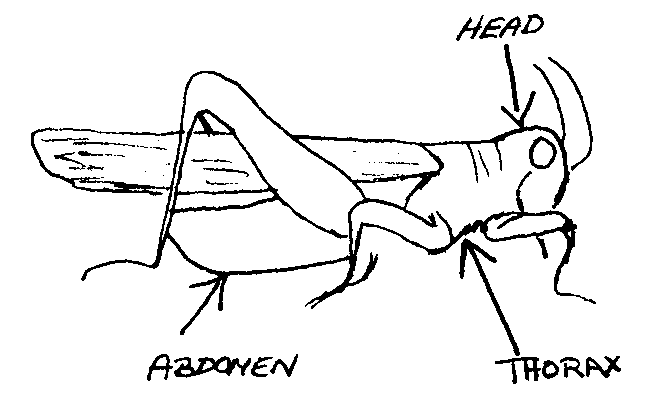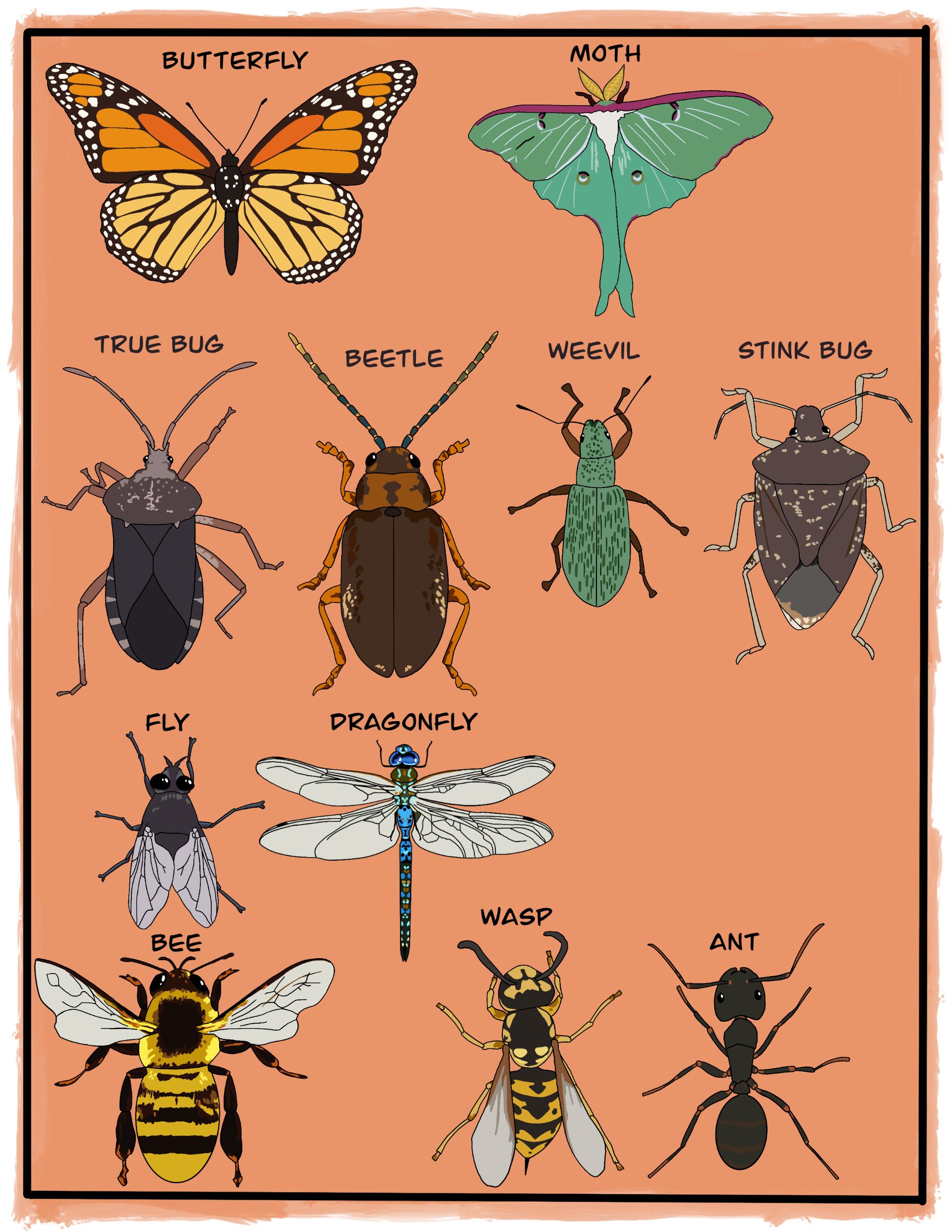Insects
The backbone of our ecosystem- without a backbone!
At first glance, you may not feel like there is much to look at in your yard, but all you have to do is zero in on one square foot of grass, and watch a circus unfold! Suddenly you'll see spinning spiders, crickets and weevils trapezing through blades of grass, ants lifting seeds 50X their weight, and all sorts of insects eating each other in front of your very eyes. The drama is thrilling, and a great way to focus attention in children and adults alike.
Allowing ourselves to become captivated by these tiny creatures gives us a much richer perspective of the ecology of an environment as a whole. Without insects providing the backbone of all of our food systems, we wouldn't survive.
Anatomy of an Insect
Insects all have incredible adaptations to help them thrive in their environments. While they all have exoskeletons, with 6 legs and three distinct body parts, insects can be further recognized in many smaller groups, like true bugs, beetles, butterflies, moths, or flies- all of which have amazing and unique characteristics that make them special. No matter what shape, insects are crucial parts of our ecosystems, as they decompose dead organic matter, and provide the base of the food chain in virtually every environment.

